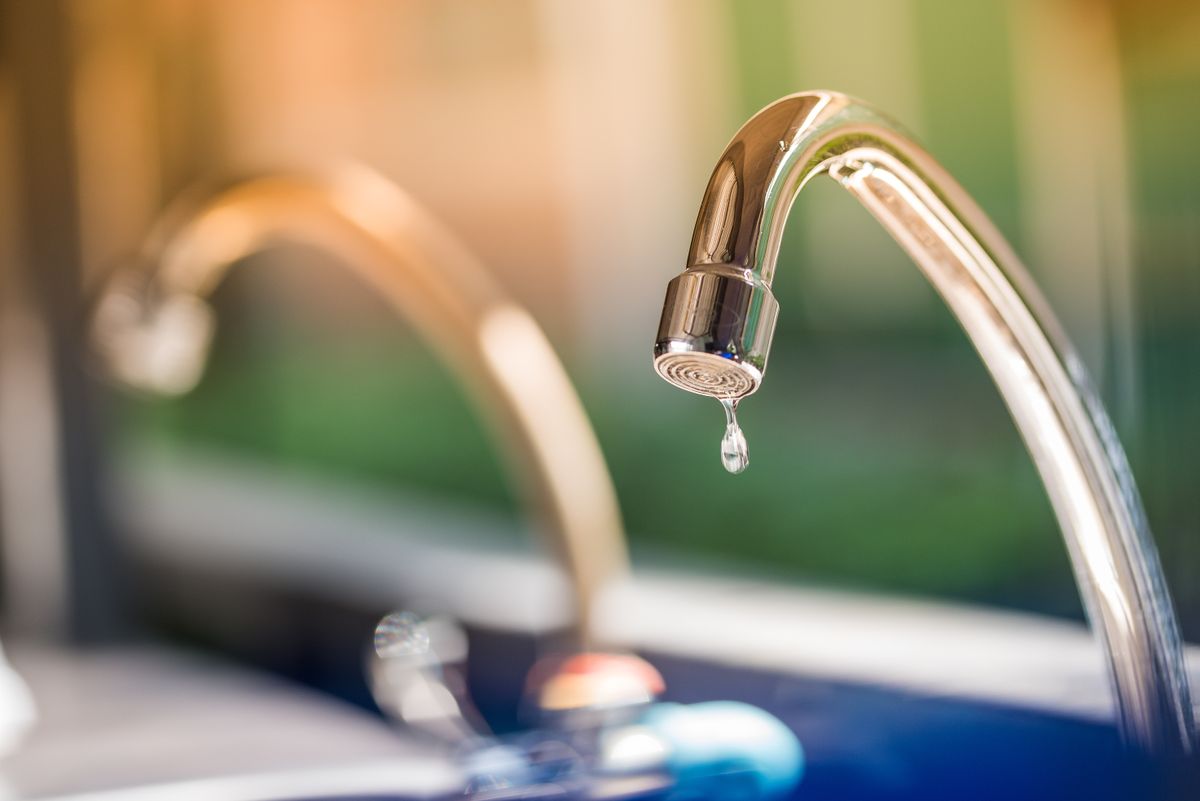We've stumbled upon this great article involving Leaky Faucets: Why They Happen & What to Do About Them below on the internet and concluded it made perfect sense to talk about it with you here.

Dripping taps may appear like a minor hassle, yet their influence goes beyond just the inconvenience of the audio. From drainage to sustaining unnecessary economic costs and health and wellness risks, neglecting a trickling faucet can lead to numerous repercussions. In this write-up, we'll explore why it's essential to address this usual home issue promptly and effectively.
Waste of Water
Ecological Effect
Leaking faucets contribute considerably to water waste. According to the Epa (EPA), a solitary faucet dripping at one drip per second can lose greater than 3,000 gallons of water each year. This not just stress water resources but also influences ecosystems and wild animals dependent on them.
Financial Expenses
Raised Water Costs
Beyond the environmental influence, dripping taps can pump up water bills substantially. The collected wastefulness in time equates right into greater energy costs, which can have been prevented with timely repair services.
Prospective Property Damages
Furthermore, long term dripping can cause damage to fixtures and surfaces surrounding the faucet. Water buildup can trigger discoloration, deterioration, and also architectural issues if left ignored, resulting in extra fixing costs.
Wellness Issues
Mold And Mildew and Mildew Growth
The consistent existence of dampness from a trickling faucet develops a perfect atmosphere for mold and mildew development. These fungi not only compromise indoor air quality yet additionally pose wellness threats, particularly for people with respiratory system problems or allergies.
Waterborne Conditions
Stagnant water in leaking taps can become a breeding place for bacteria and other microorganisms, boosting the threat of waterborne diseases. Contaminants such as Legionella microorganisms grow in stagnant water, potentially causing major diseases when consumed or inhaled.
DIY vs. Expert Fixing
Pros and Cons of Do It Yourself Repair Work
While some might try to fix a dripping faucet themselves, DIY repair services include their own set of challenges. Without correct understanding and devices, DIY efforts can intensify the concern or result in insufficient repairs, extending the trouble.
Advantages of Hiring a Specialist Plumber
Working with a professional plumber makes sure that the underlying cause of the dripping tap is addressed efficiently. Plumbing technicians possess the competence and devices to diagnose and fix tap concerns efficiently, saving time and lessening the threat of more damages.
Step-by-Step Overview to Dealing With a Dripping Tap
Devices Called for
Prior to attempting to repair a leaking faucet, collect the essential devices, including an adjustable wrench, screwdrivers, substitute components (such as washers or cartridges), and plumber's tape.
Common Faucet Issues and Their Solutions
Recognize the kind of faucet and the details problem causing the drip. Usual issues include damaged washing machines, rusty shutoff seats, or malfunctioning O-rings. Describe manufacturer directions or online tutorials for step-by-step advice on repair work.
Safety nets
Regular Maintenance Tips
To stop dripping taps, execute routine maintenance such as cleaning aerators, checking for leakages, and replacing damaged parts promptly. Furthermore, think about setting up water-saving tools or upgrading to more reliable components.
Significance of Prompt Services
Attending to trickling faucets as quickly as they're observed protects against further water waste and potential damage, ultimately conserving both water and money in the long run.
Impact on Building Worth
Perception of Well-Maintained Property
Keeping a property in good condition, consisting of addressing upkeep issues like leaking faucets, improves its viewed value and charm among prospective buyers or occupants.
Influence on Resale Worth
Residences with well-kept plumbing fixtures, including faucets, command greater resale values in the real estate market. Addressing leaking faucets can add to a favorable impression during property evaluations and settlements.
Ecological Obligation
Specific Payment to Preservation
Taking obligation for taking care of leaking taps straightens with broader initiatives toward water conservation and ecological sustainability. Every person's actions jointly make a considerable impact on preserving precious sources.
Lasting Living Practices
By prioritizing prompt repair services and taking on water-saving routines, individuals contribute to sustainable living techniques that profit both present and future generations.
Final thought
Resolving a leaking faucet goes beyond plain benefit; it's an important action toward preserving water, decreasing economic costs, and protecting wellness and building. Whether with do it yourself repair work or expert aid, taking action to repair trickling faucets is a tiny yet impactful way to promote responsible stewardship of resources and contribute to a healthier, a lot more lasting future.
Why Are My Faucets Dripping (And Can I Fix it Myself)?
Causes of a Dripping or Leaking Faucet
Whether you’re hearing drops of water falling and hitting a sink, or noticing water ooze out from the base of the spout, you shouldn’t ignore a dripping or leaking faucet. And, the good news is, sometimes you can fix the problem yourself.
In this article, we’ll review a few common causes of dripping and leaky. We’ll also walk you through some basic ways to find the problem and handle it without calling anyone — and let you know when to call in a pro.
But, no matter what the cause, or whether you can handle it on your own, the sooner you address it, the better.
Each drip may be a tiny amount of water. But, they all add up quickly. According to the U.S. Geological Survey, one faucet losing one drop every 20 seconds — five a minute — wastes around a liter of water every day, and 173 gallons a year.
Add in more than one in your house, and it’s a lot of water to waste. So, we’ll help you get to the bottom of things quickly.
Four Reasons Your Faucet May Be Dripping
Aerator is Damaged or Unseated Valve Seat is Corroded O Ring is Loose or Worn Out Part of the Assembly is Loose Aerator is Damaged or Unseated
If you unscrew the end of your faucet, you’ll find the aerator. It’s the little stem piece with a screen on it that shuts off the water circulation.
If it’s damaged, or if it’s not sitting right, it will allow water to pass through.
Valve Seat is Corroded
Next is the valve seat, which is connected to the washer. If the washer wasn’t in place correctly, then it could have ground against the seat. Over time, this damages the valve seat.
The problem could also be corrosion: Over time, the part has worn out, and it’s now allowing water to pass through.
O Ring is Loose or Worn Out
Since the o ring is only a small rubber gasket, it’s a common reason why the faucet is dripping. You’ll find it at the base of the faucet, and it’s there to keep water from coming out where it’s not supposed to.
However, it’s common for the o ring to wear out over time. When it does, you’ll notice a drip.
Part of the Assembly is Loose
So far, we’ve looked at a few small, specific parts. But, the problem could be anywhere in the assembly if something’s out of place.
Even if a part isn’t damaged, over time, it may have become loose or dislodged. It could be the parts we mentioned, or the aerator at the tip of the faucet, the stem itself,
Can I Fix a Leaky Faucet Myself?
Depending on the problem, and how handy you are, there’s a chance you can fix a leaky faucet without calling a professional. But, you do run the risk of making the problem worse.
If it’s a small drip, you can certainly try a few troubleshooting tactics. We’ll walk you through them in a moment.
But, no matter what, your first step should be shutting off the water coming into the faucet. You should find a shutoff valve under the sink on the pipes leading to it. Turn each one clockwise until they close tightly.
Next, make sure you have the right tools for whatever you’re attempting. It’s tempting to make do with what you have. But, you need the right ones for a reason: You’re often dealing with small parts that can break if you handle them carelessly.
If you’re feeling confident, here are some places to start.
Items Near the Tip of the Faucet
A few of the parts we mentioned — particularly the valve seat and washer — are located at the tip of the faucet where the water comes out. They’re easy to access, making it a good place to start.
Check the O Ring
To check the o ring, you’ll need to take off the spout at the base. It’s easiest on kitchen sinks with long spouts, versus the smaller, bulkier base on most bathroom sinks.
Either way, this can be tricky, so do it carefully and don’t force anything. If it’s not coming right off, you’re much better off calling in a pro than possibly breaking something.
For a kitchen sink, there’s usually a nut or coupling assembly at the base of the spout. These often slide off easily without using any tools.
Once you’ve disassembled those parts, gently but forcefully twist off the spout.
Then, you can see the o rings. There should be two of the rubber gaskets on the base. If they look worn or damaged, replace them, and see if that solves the problem.

I'm certainly very interested by How to Fix a Dripping or Leaky Faucet and I really hope you liked my blog posting. For those who enjoyed reading our blog post if you please remember to pass it around. Kudos for your time. Come back soon.